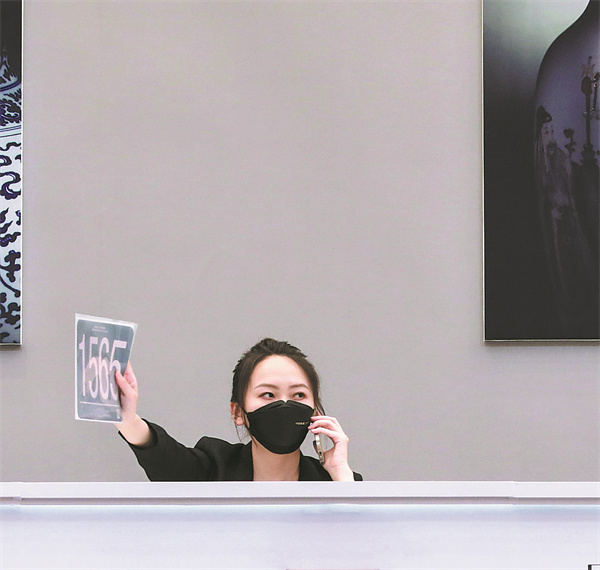

Li Ruiqi, a 28-year-old staff member at an auction company, has been sharing her daily work experience and knowledge about collectibles on her WeChat channel since the end of last year. Her subscribers have continued to grow as more people, especially the younger generation, are eager to use the platform to learn about history and traditional culture.
"Hello, everyone, today I'll introduce you to the unique porcelain made in the Qing Dynasty (1644-1911) during the reign of Emperor Daoguang," says Li, who works at China Guardian Auctions.
The auction house held a themed exhibition showcasing such porcelain recently, drawing the attention of many antiques enthusiasts.
"We do our utmost to explore the cultural connotation behind these collectibles, whereby their value will also be increased. When the audiences see a collection, they will no longer just see an old object that looks beautiful. Instead, they will truly understand the important historical value behind it," says Li.
Nowadays, young Chinese are interested in learning about cultural relics, and professionals like Li are injecting new vitality into the collectibles market, contributing to the inheritance and protection of traditional culture.
Shao Tianhong, also an art market practitioner of the post-1990 generation, graduated from a British university and studied Chinese art history for her master's degree. Shao has been engaged in the auction market since graduation.
"I think young Chinese today have more opportunities to experience both Chinese and Western cultures, and their aesthetic and artistic perceptions are different from their previous generations," Shao says.
Gan Xuejun, president of the Beijing Association of Auctioneers, says that auction promotes and publicizes traditional culture in the market, leads the public to recognize and attach more importance to the value of cultural relics through commercial activities, and improves people's awareness of protecting cultural relics and traditional artworks.
"Young Chinese serve as a new force connecting the past with the future," says Gan. "China's collectibles and artworks market will rely on them to further improve standardization, specialization and internationalization."
Nowadays, both auctioneers and traditional museums have stepped into the field of digital collectibles development to appeal to more youngsters. They digitize their collectibles through original designs and sell them to consumers online, including music, animation, games and handmade figurines.
Last year, a traditional artworks auction company in the eastern Chinese city Nanjing launched nine digital collectibles based on painted and calligraphic cultural relics, with a total distribution of 45,000 items. They were sold out in two minutes, with a total sales volume of 2.7 million yuan ($393,000). According to a report issued by iResearch, China's digital collectibles market reached 280 million yuan in 2021.
Shao says that protecting Chinese traditional culture through her work gives her "a great sense of achievement".